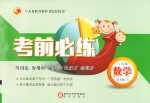题目内容
When the clerk at the counter was rude to her, she and told the clerk to speak to him.
A. rang Tony about B. rang Tony up C. rang Tony back D. rang Tony for
练习册系列答案
 考前必练系列答案
考前必练系列答案
相关题目
题目内容
When the clerk at the counter was rude to her, she and told the clerk to speak to him.
A. rang Tony about B. rang Tony up C. rang Tony back D. rang Tony for
 考前必练系列答案
考前必练系列答案